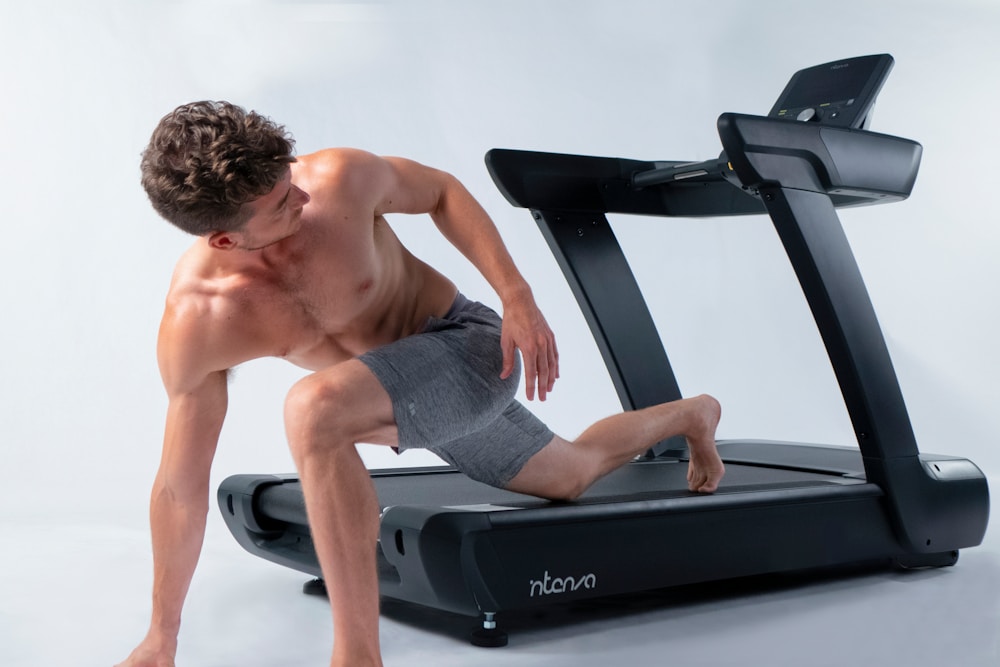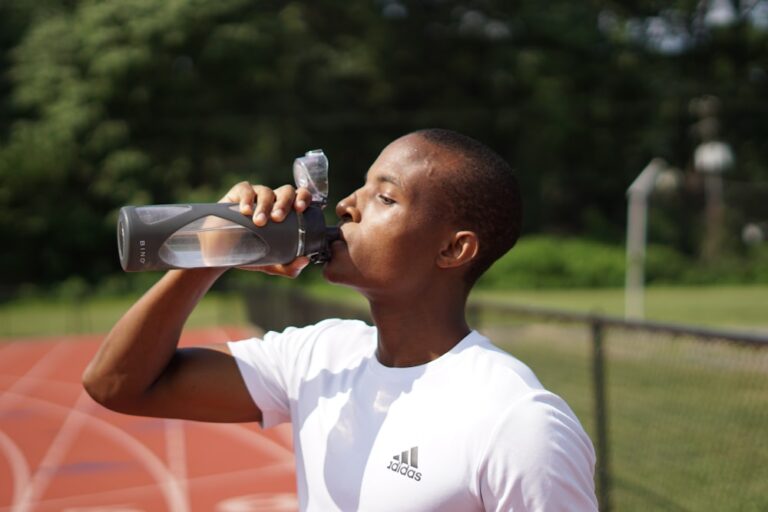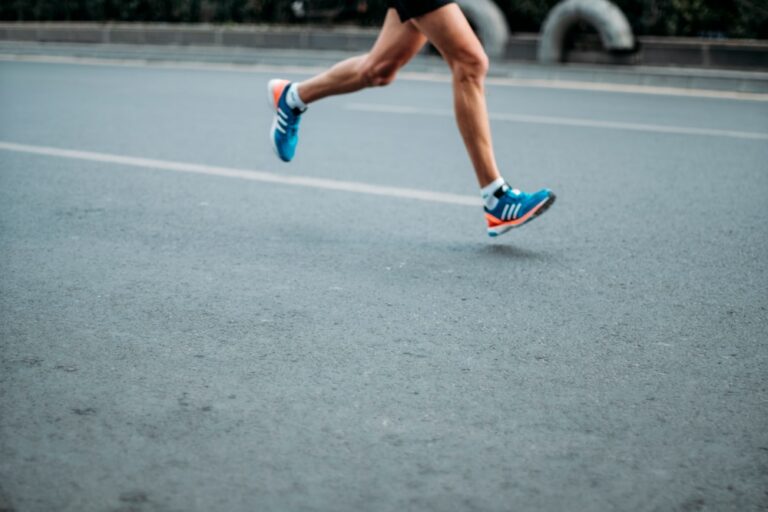
Elegance in Rebellion.
Own the Edge.
Why Walking Backwards Should Be Part of Your Fitness Routine

In fitness, most routines move in one direction — forward.
Weights move up, strides go ahead, progress follows a straight line.
But sometimes, the best way to move ahead is to take a few steps back. Literally.
Backward walking — once seen as a rehab drill or a TikTok curiosity — is now being rediscovered by trainers, physiotherapists, and performance experts as a surprisingly effective movement for posture, knee health, coordination, and even fat loss.
And here’s the twist: the benefits aren’t just physical.
The Modern Problem: One Direction Living
Think about your day. You walk forward, sit forward, lean forward at your desk, even scroll your phone forward.
Modern posture is all front-loaded — our quads tighten, hips shorten, hamstrings stiffen, and spines curve. The result? Back pain, tight knees, and a body that forgets how to balance.
Walking backwards — known as retro walking in physiotherapy — reverses that overuse. It trains the neglected muscles, restores alignment, and forces the brain to focus again.
Dr. Jack McNamara, senior lecturer in clinical exercise science at the University of East London, calls it a “neuromuscular reset” — a movement that retrains your brain to control your body more intelligently.
The Science of Going Backwards
At first glance, it feels awkward — the lack of visibility, the new rhythm. But that’s exactly why it works.
When you walk backwards, you engage opposite muscle patterns. Instead of dominant quads and hip flexors, your hamstrings, glutes, and calves take the lead. The stride is shorter, more deliberate, and more controlled.
This shift does a few important things:
- Reduces joint load: backward walking reduces the impact on knees and ankles by distributing pressure differently.
- Boosts stability: smaller steps improve proprioception (your body’s awareness of movement).
- Increases calorie burn: studies show backward walking can raise energy expenditure by up to 40% compared to walking forward at the same speed.
In short, it’s one of those rare training tweaks that’s both safer and more effective.
What Happens Inside Your Body
Walking backwards engages the posterior chain — the same muscle group responsible for athletic power.
It stretches the hamstrings, activates the lower back, and strengthens stabilizing muscles that most gym routines ignore.
Dr. McNamara notes that the “biomechanics of backward walking” enhance paraspinal muscle activity — the deep muscles that protect your spine. Over time, this translates to better posture and less lower-back pain.
1. It Strengthens Weak Links
Most leg exercises — running, cycling, leg press — emphasize the front thigh (quadriceps). But functional strength depends on balance between front and back.
Backward walking fires up the glutes, hamstrings, and calves, building endurance in the smaller stabilizers that control motion.
Matt Kendrick, strength coach and founder of MK Health Hub, explains that retro walking “strengthens muscles that are underused in forward motion,” creating symmetry that prevents common overuse injuries.
2. It Improves Balance and Coordination
Your brain loves routine — that’s why walking forward feels automatic. Reverse movement forces new neural patterns, improving coordination, reaction time, and spatial awareness.
Studies even link retro walking to improved cognitive performance — memory, focus, and problem-solving.
The reason? You can’t zone out when you walk backwards. Your brain stays engaged with every step.
3. It Helps With Fat Loss
Metabolically, walking backwards burns significantly more calories because it demands higher muscular engagement and greater cardiovascular effort.
In one 2018 study, participants burned roughly 38–40% more energy walking backward than forward at the same pace.
This makes it a low-impact fat-burning option for people who want to get leaner without pounding their knees on long runs.
4. It Reduces Knee and Back Pain
If you’ve ever struggled with runner’s knee, IT band syndrome, or plantar fasciitis, walking backwards may be the safest form of rehab you can do.
By activating opposite muscle groups, it relieves repetitive stress on your knees and realigns gait patterns. It also stretches tight hamstrings — one of the most overlooked causes of lower back stiffness.
As Dr. McNamara puts it:
“Walking backwards is one of the few exercises that strengthens while it restores.”
5. It Sharpens Your Mind
There’s a reason neurologists use backward walking to assess motor control in patients — it requires real cognitive effort.
You must coordinate limbs, maintain balance, and visually track your environment in reverse.
This mental challenge improves brain-body communication, making you more responsive, aware, and alert even during normal activities.
Some studies also show mild improvements in executive function — your ability to plan, focus, and multitask effectively.
Who Should Try It?
Anyone who spends most of their day seated or walking on flat surfaces.
That includes:
- Office workers
- Runners
- Cyclists
- Gym-goers with repetitive lower-body training
- Anyone recovering from minor knee or back tightness (under guidance)
For athletes, it’s a hidden gem. Footballers, tennis players, and sprinters have begun using backward walking as a mobility primer — improving agility and reducing future injury risk.
How to Start Walking Backwards (Safely)
Backward walking is easy, but it isn’t effortless. You’re training your coordination as much as your body.
Step 1 — Start on a treadmill
- Set speed to 2–3 km/h.
- Keep posture upright, eyes forward.
- Hold side rails until comfortable.
- Walk for 5–10 minutes.
Step 2 — Focus on form
Each step should land toe-to-heel, not heel-to-toe.
Imagine lightly “pulling” yourself backward rather than pushing off forcefully.
Step 3 — Add incline or resistance
Once stable, increase incline to 3–5% for extra glute activation.
Add short 1-minute intervals into your regular treadmill walk or run.
Step 4 — Try outdoors (optional)
If you train outdoors, choose a flat, open area. Keep your head neutral, glance over your shoulder occasionally, and stay alert to surroundings.
Sample MenVice 7-Day Routine
| Day | Focus | Duration | Terrain | Tip |
|---|---|---|---|---|
| Monday | Regular running | 30 mins | Flat | Warm up with 2 min backward walk |
| Tuesday | Backward walking | 15 mins | Treadmill | Low incline |
| Wednesday | Gym or weights | — | — | Add 5 min backward cool-down walk |
| Thursday | Backward intervals | 4 × 3 mins | Flat | Rest 1 min between |
| Friday | Stretching & mobility | 20 mins | — | Focus on hips & hamstrings |
| Saturday | Backward walk + jog mix | 30 mins | Outdoor | Stay aware, control breathing |
| Sunday | Active recovery | 20 mins walk | Flat | Keep it light |
Common Mistakes to Avoid
- Leaning too far back: keep your chest tall and core braced.
- Overstriding: small, controlled steps work best.
- Ignoring surface: avoid uneven ground early on.
- Going too fast: this is a form exercise, not a sprint.
If you feel dizzy, slow down or stop. The first few sessions are about control, not distance.
MenVice Perspective: The Power of Reversal
In the gym, progress is always linked to moving forward — more weight, more reps, more miles.
But sometimes, the body — and the mind — grow stronger by changing direction.
Backward walking is exactly that kind of training. It humbles your balance, strengthens what’s weak, and quiets what’s overworked. It forces you to move with attention, not habit.
It’s not just about knees or calories. It’s about awareness. About remembering that progress isn’t linear — it’s adaptable.
So the next time you step on a treadmill, turn around.
You might find that the path backward is the fastest way to feel strong again.






